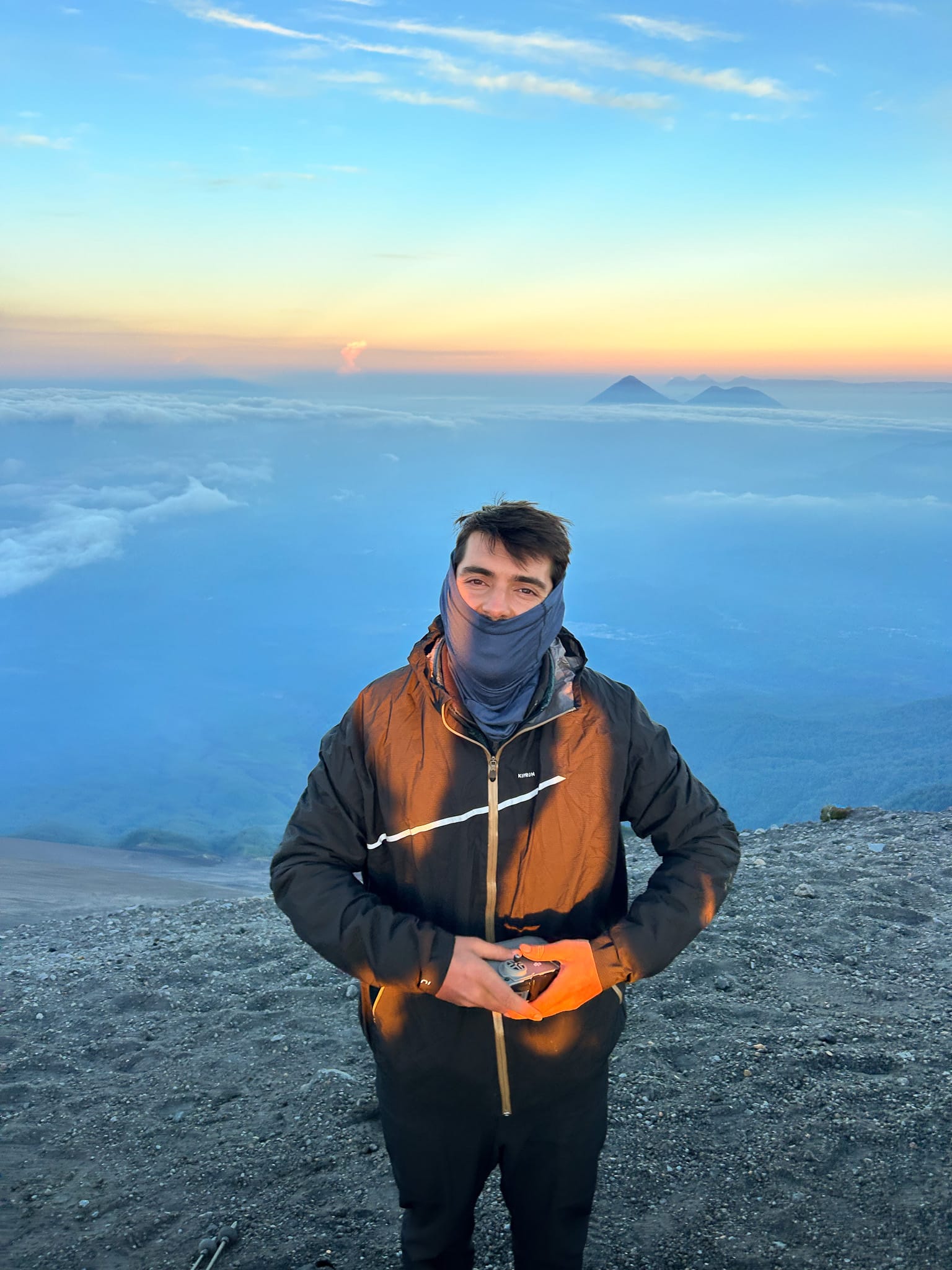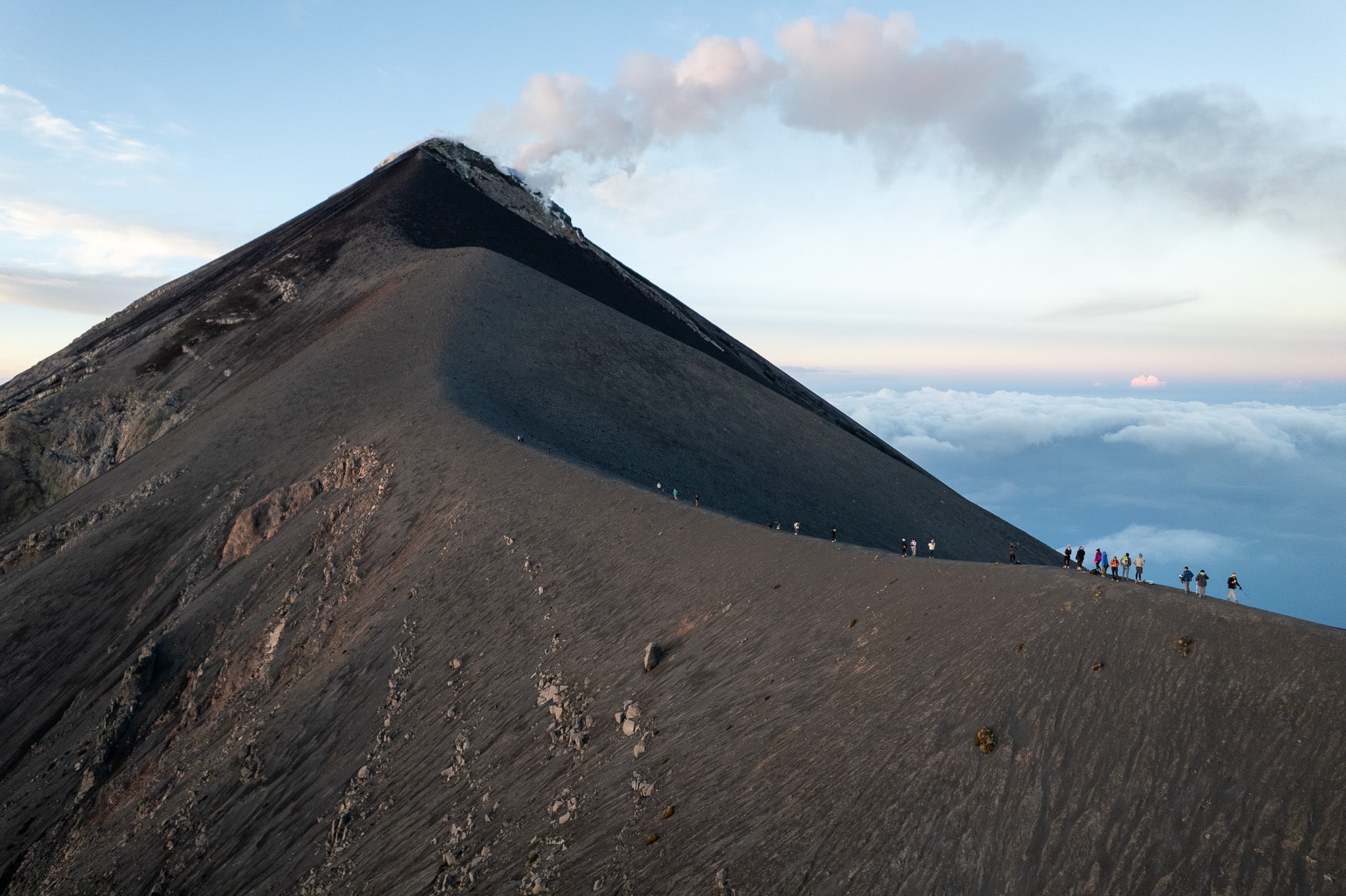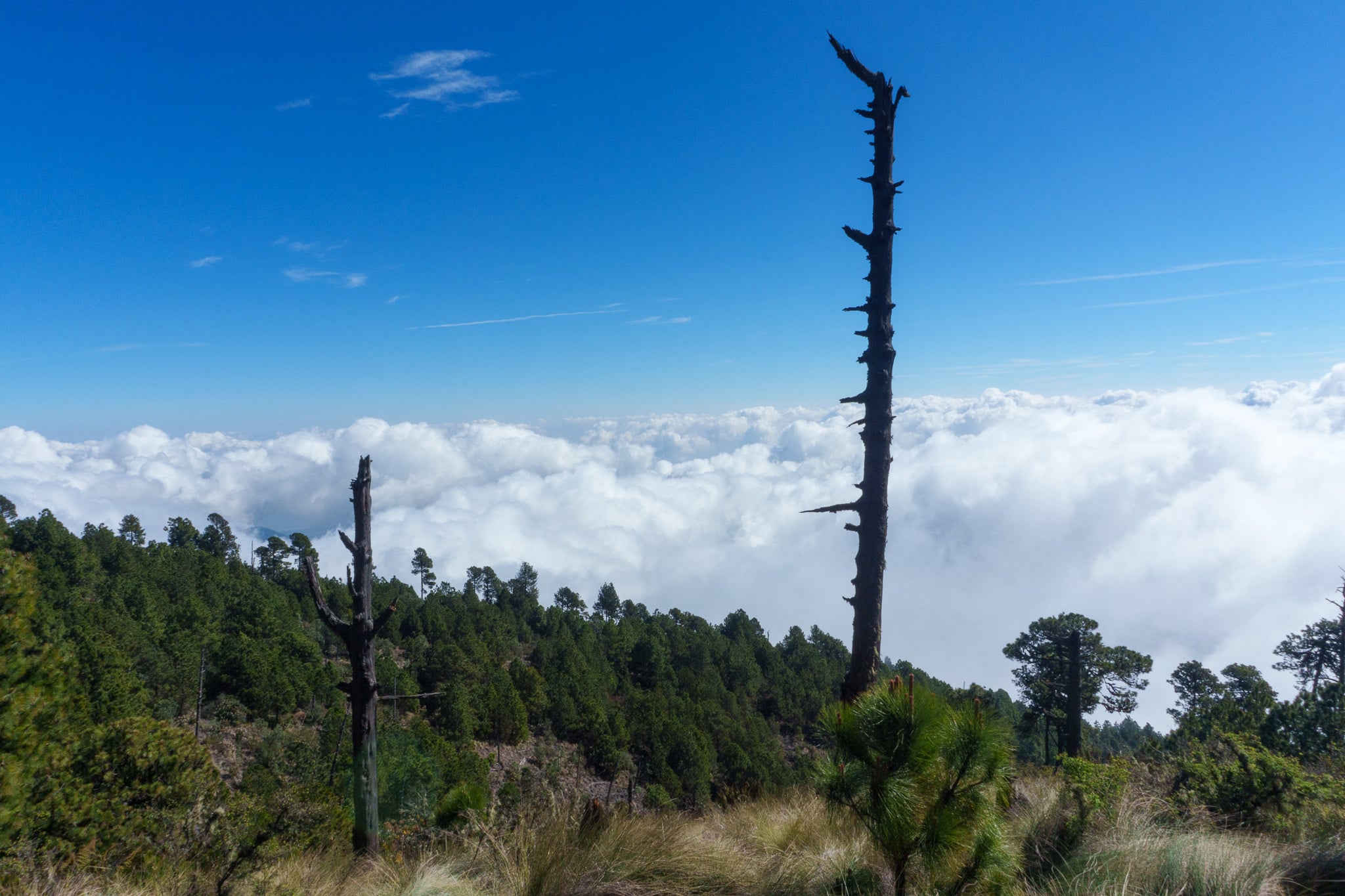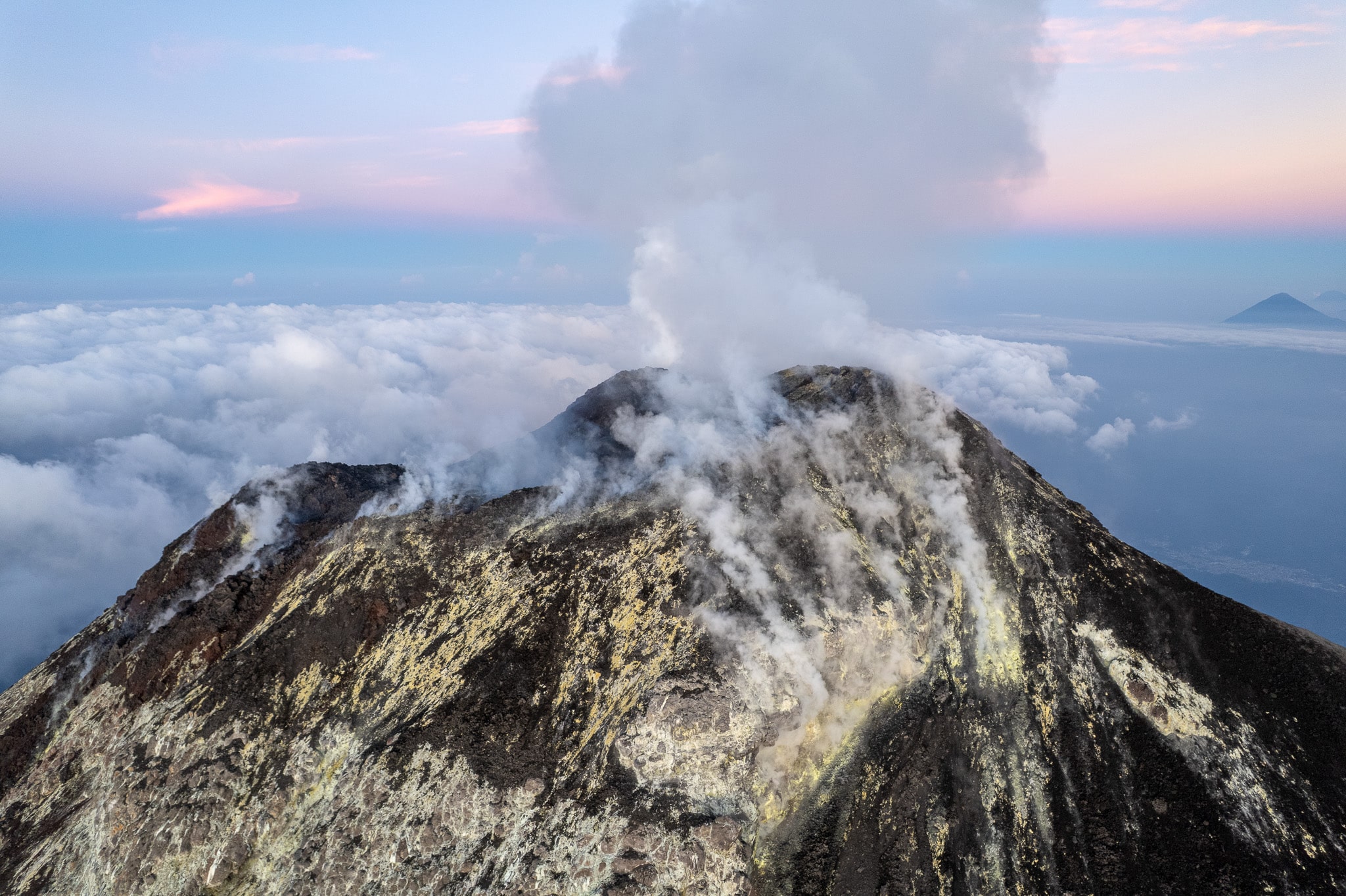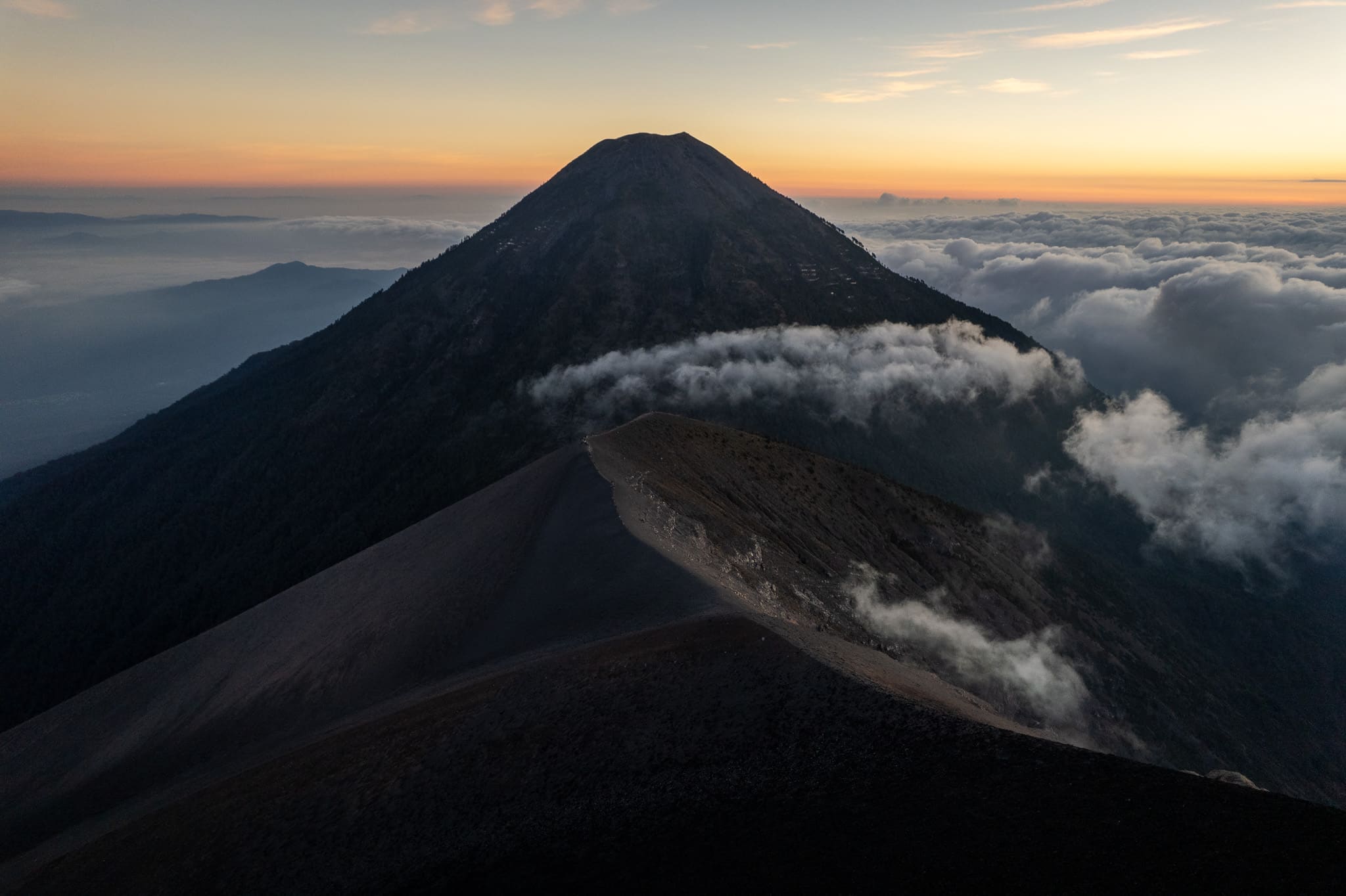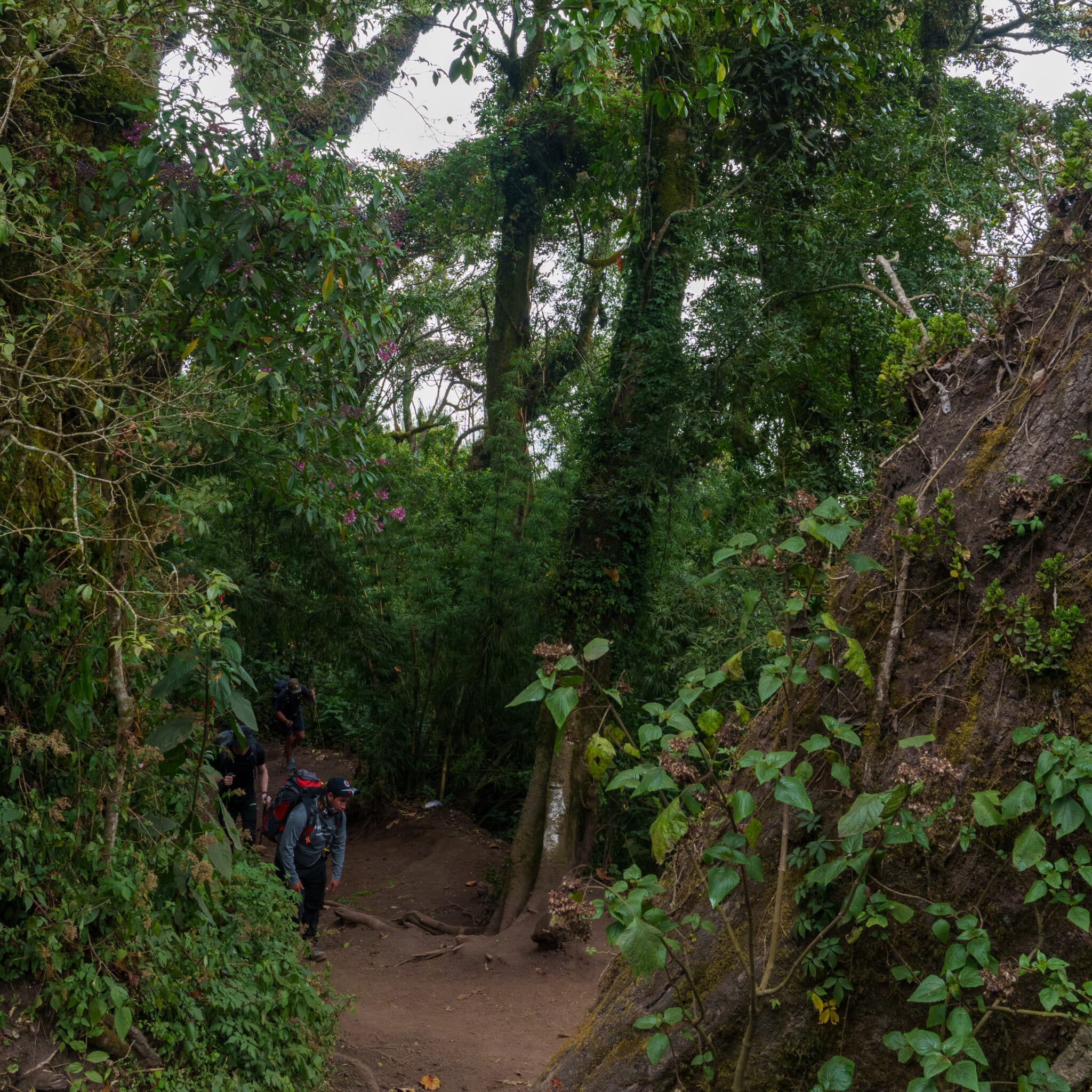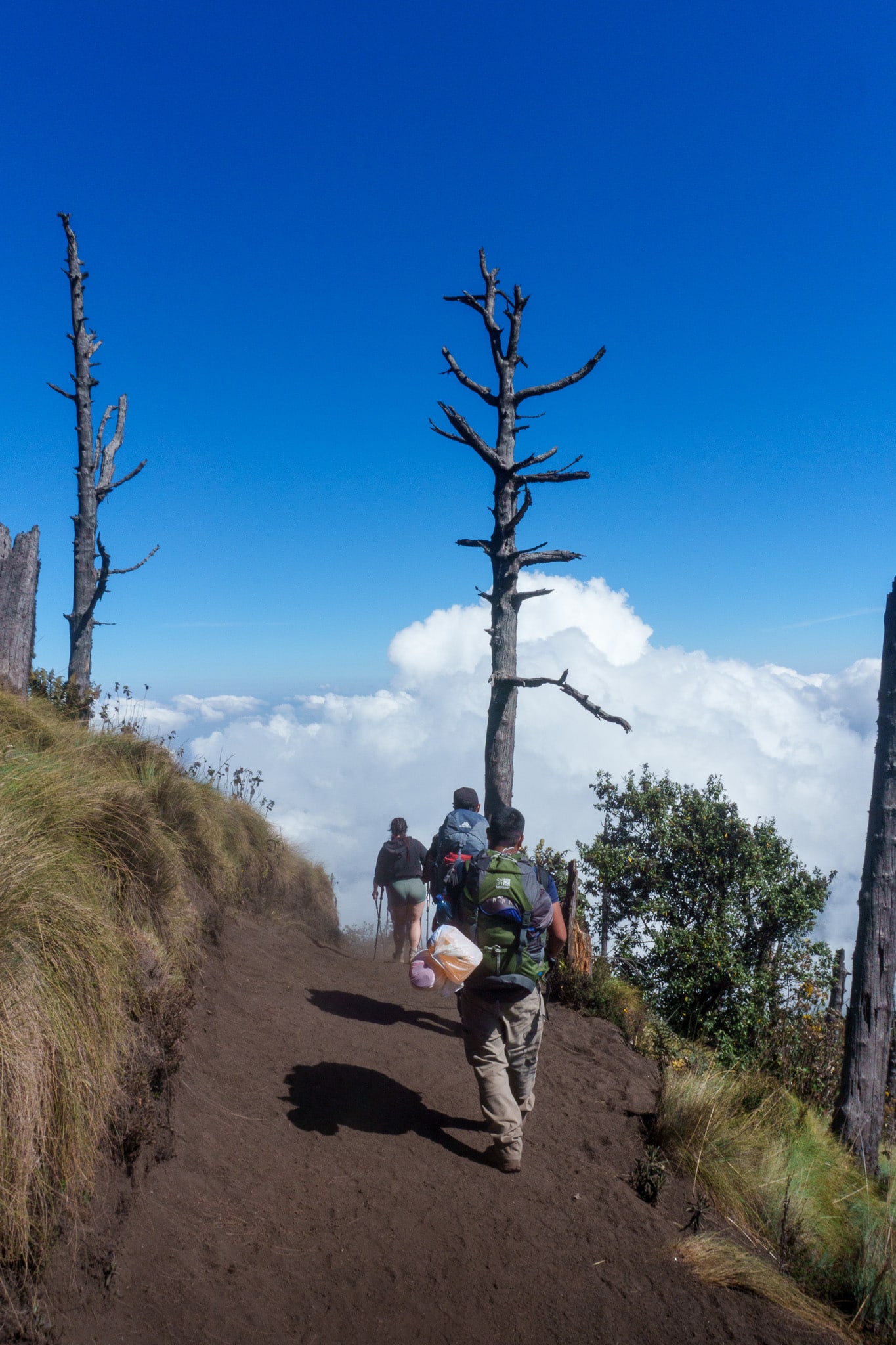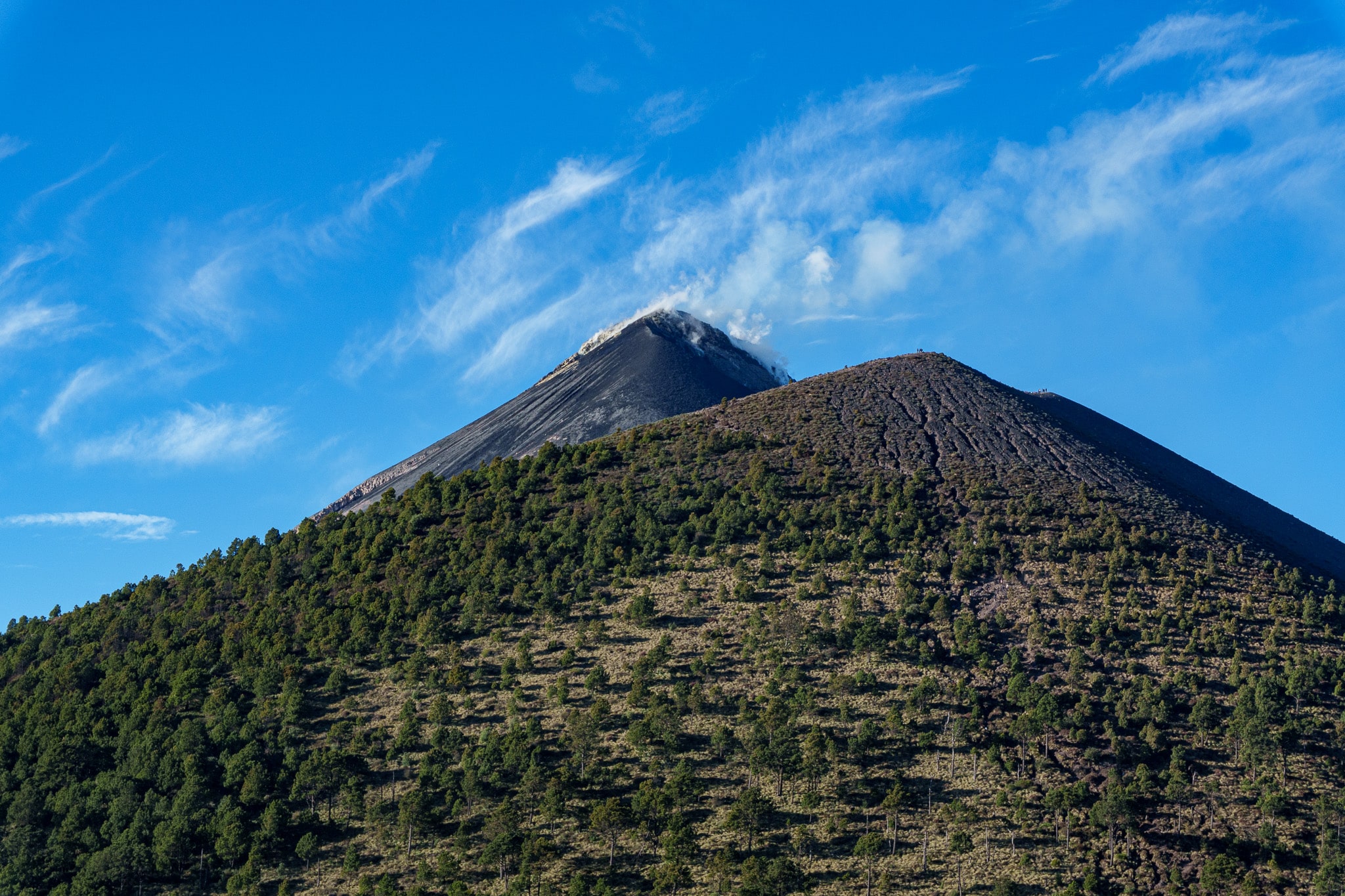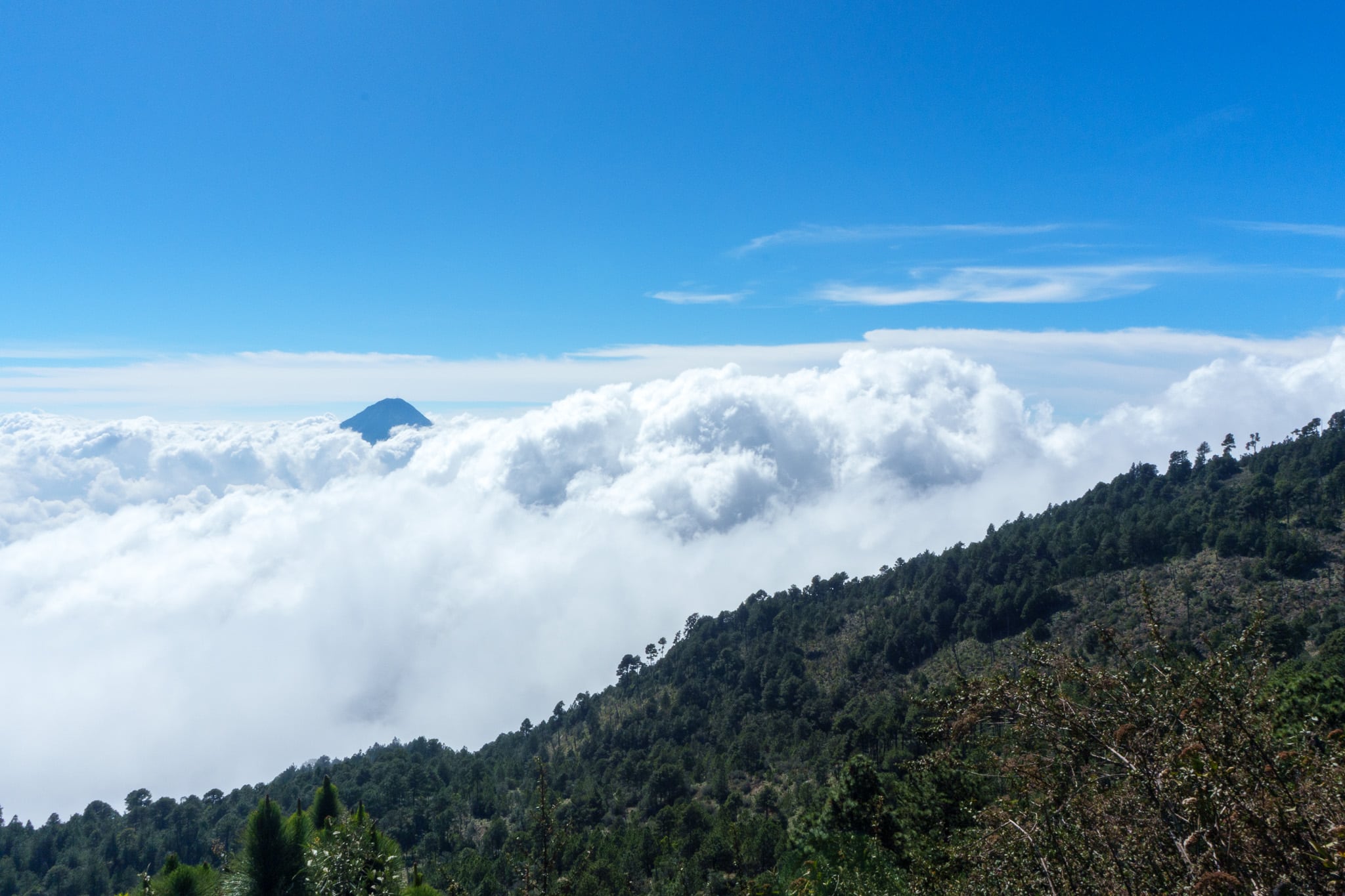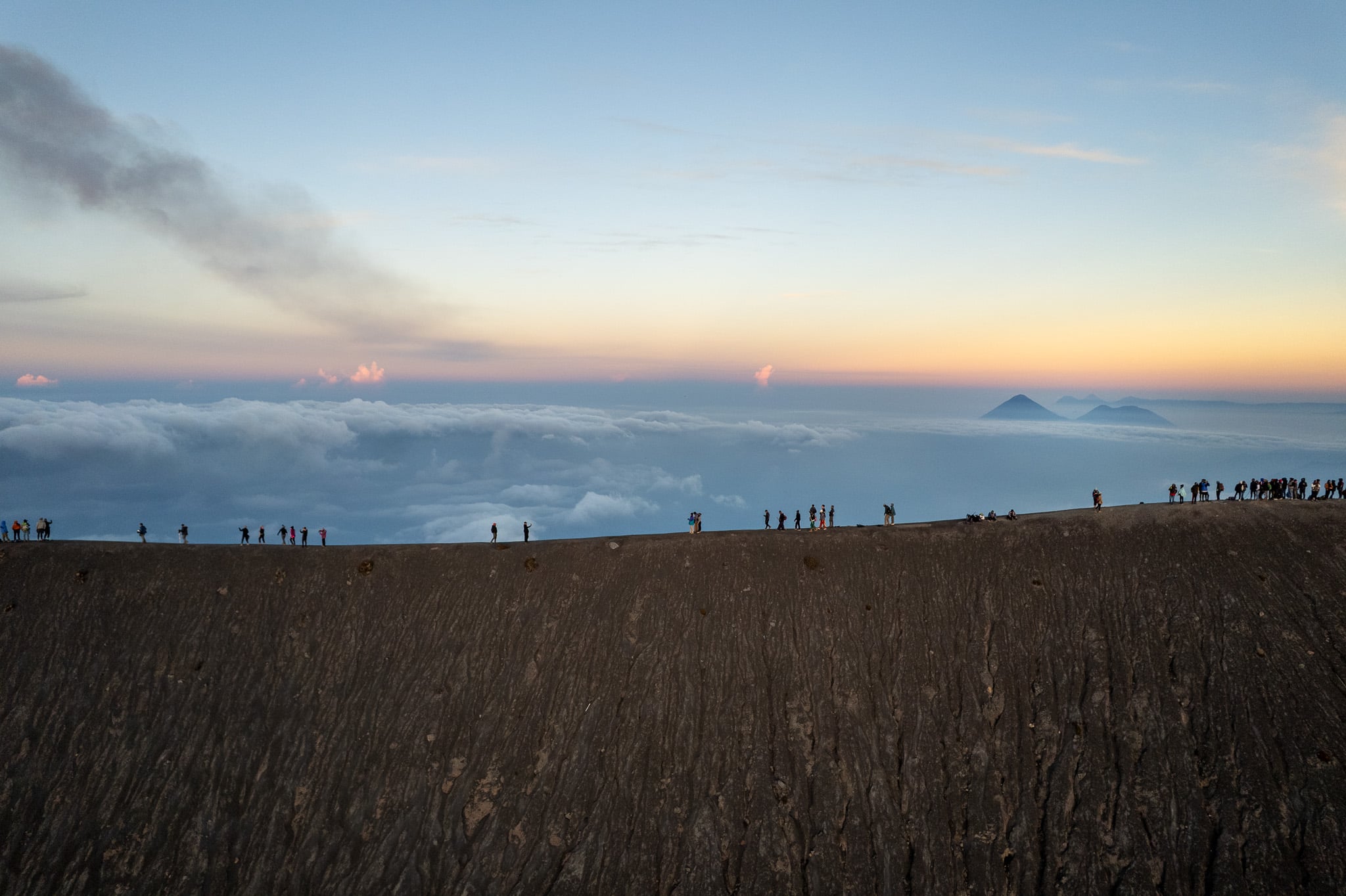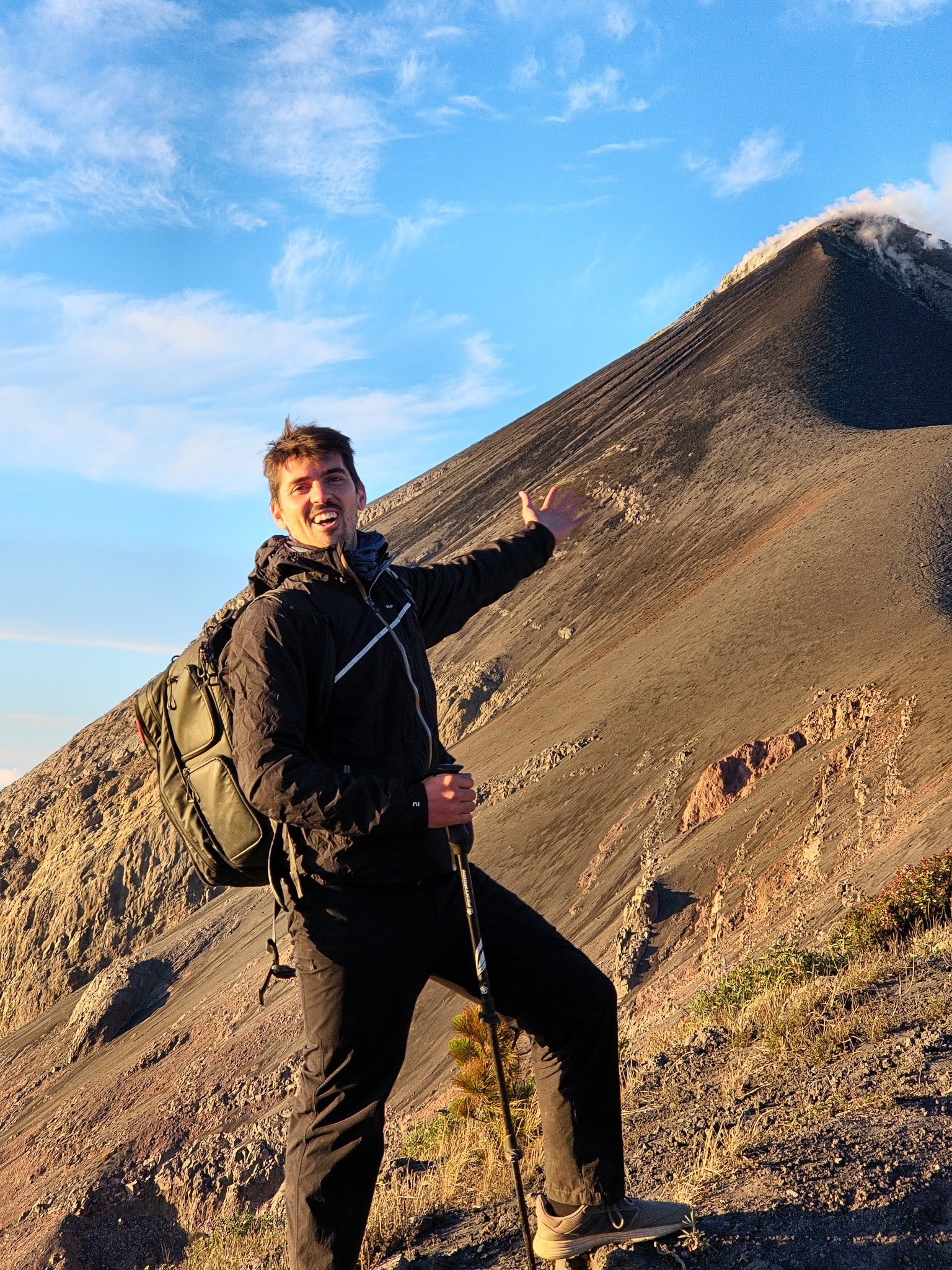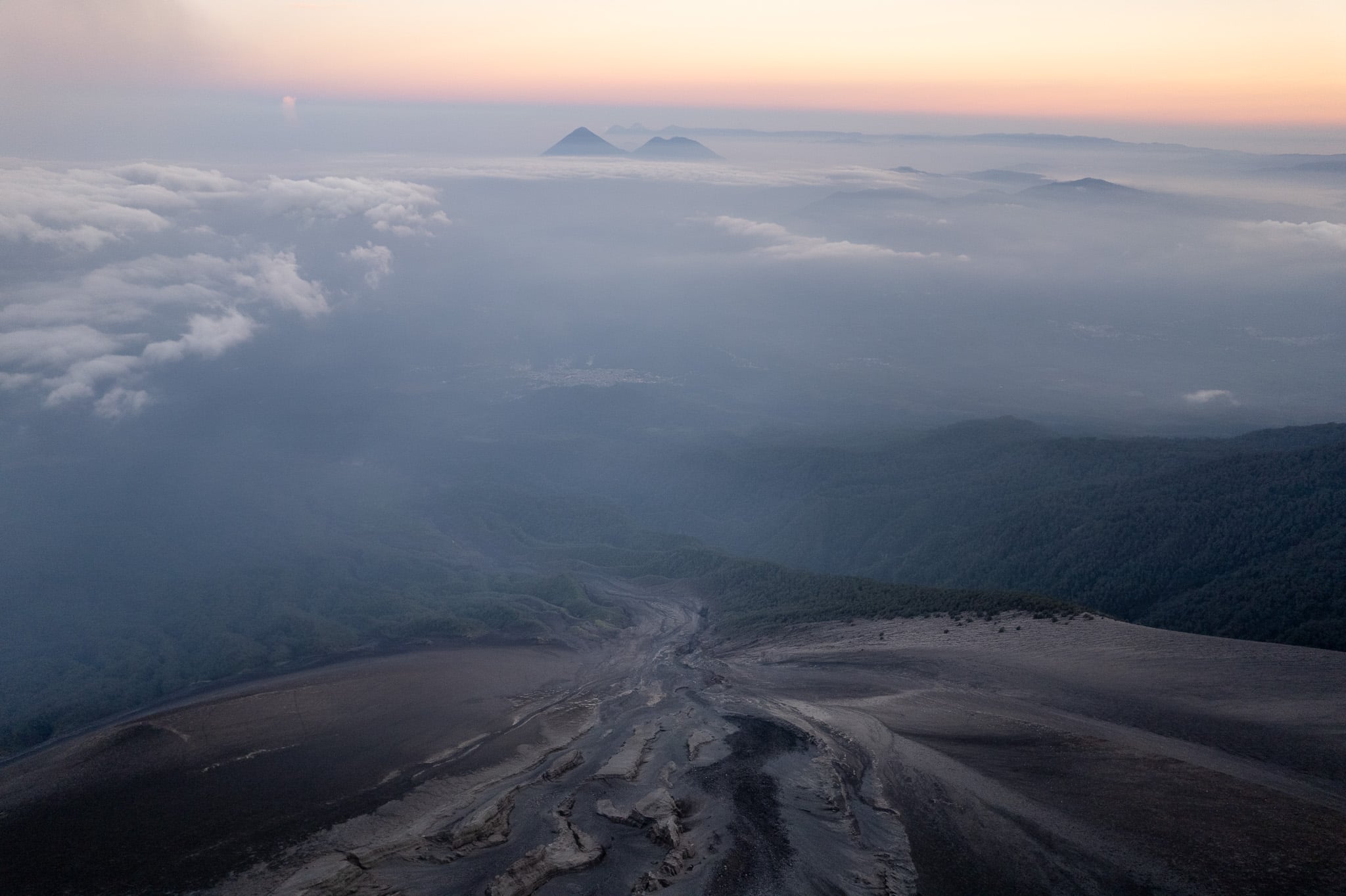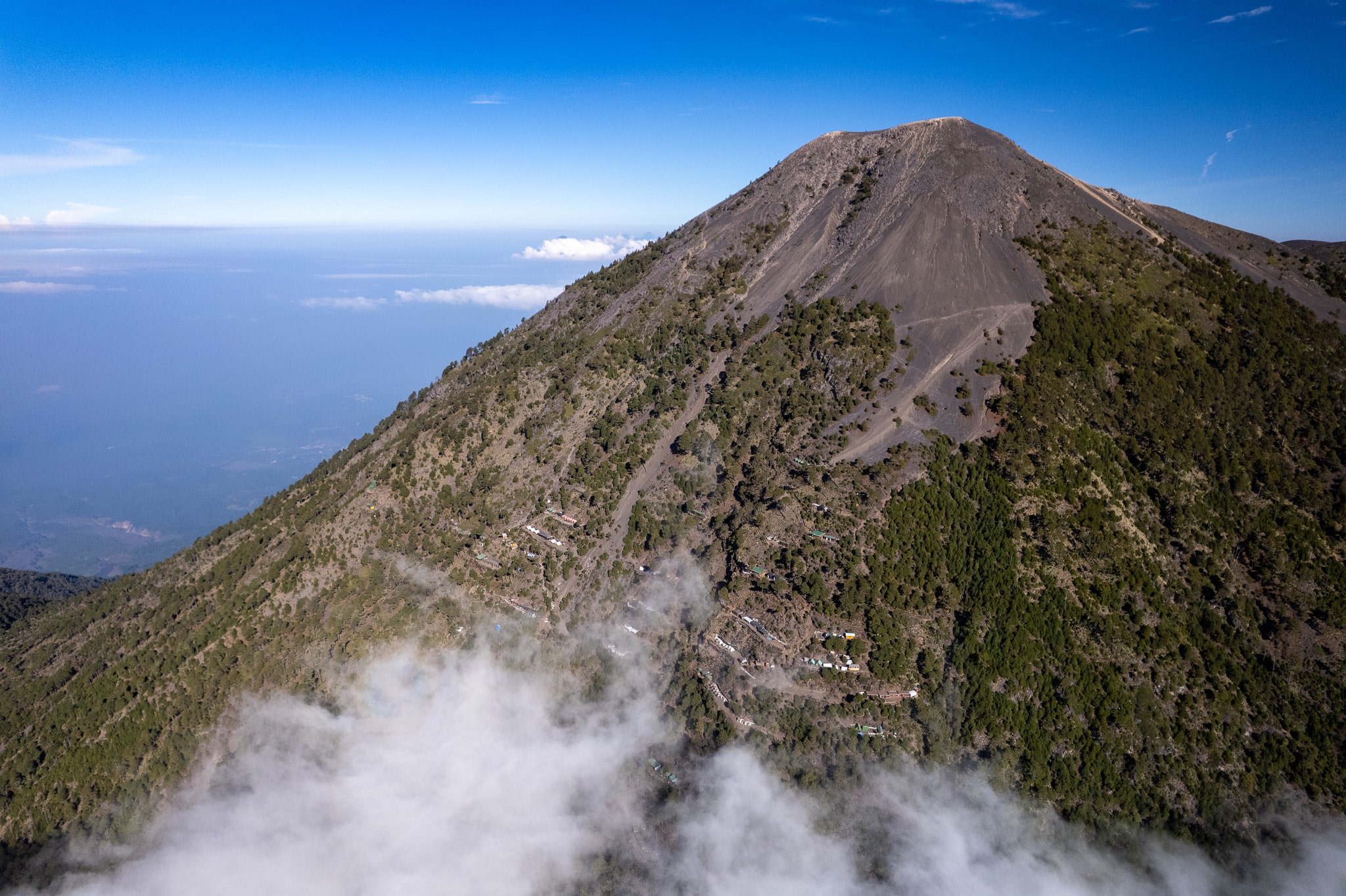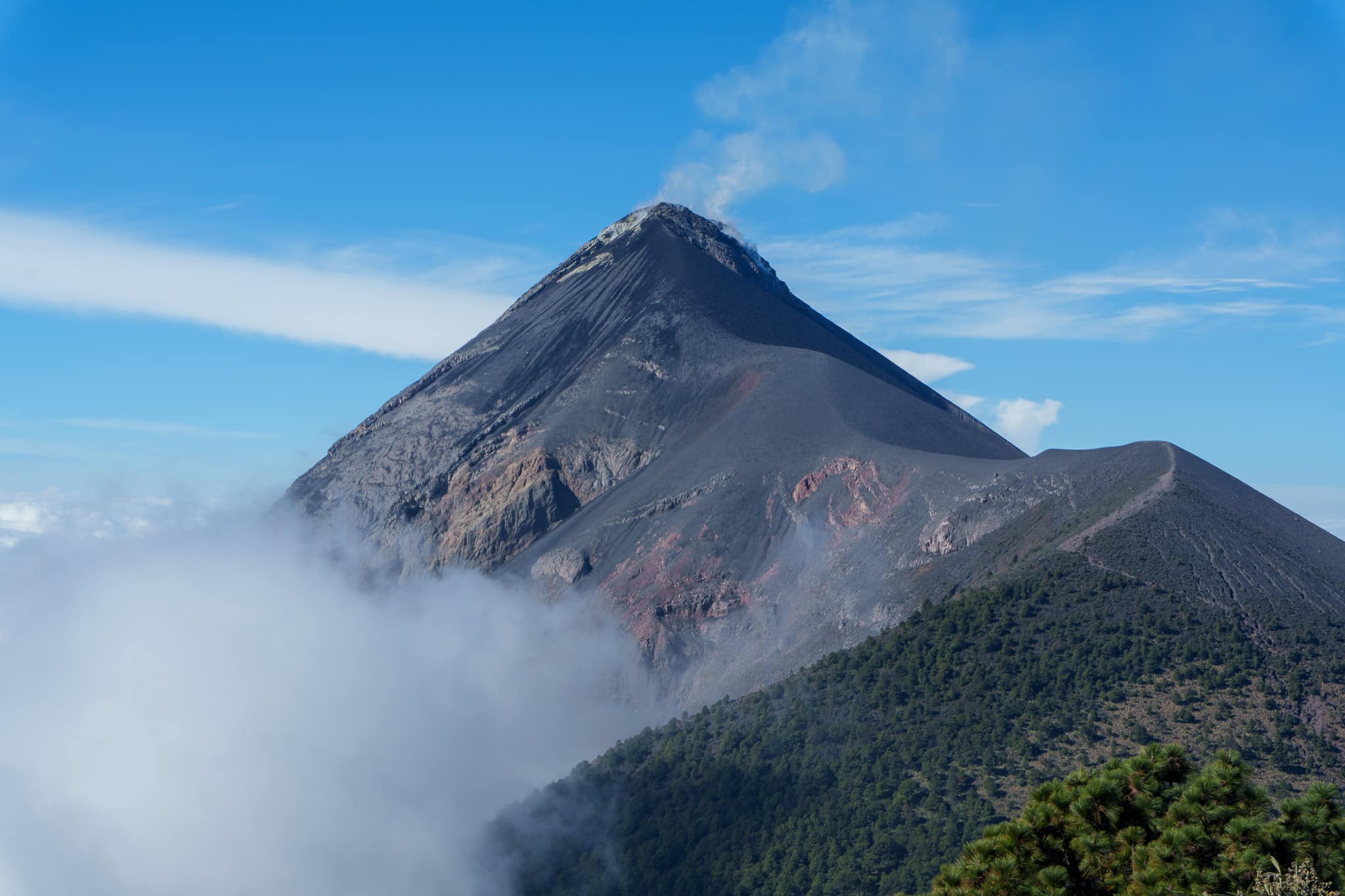You’ve probably heard of this hike—it’s becoming a must-do for backpackers and travelers passing through Guatemala. It all starts in Antigua, a charming city you simply can’t miss when visiting Guatemala. If it’s not already on your route, you might want to reconsider! (Check out this guide here for tips on exploring Antigua.)
Choosing Your Acatenango Trek Company
Local vs. International Operators
This trek is, as I mentioned, incredibly famous in Guatemala—and it’s only becoming more and more trendy. Because of its popularity, you definitely won’t be alone on this adventure! There are nearly 50 companies offering this tour, with around 30-40 of them having campsites on Acatenango volcano. The rest focus on shorter treks, like the early morning hike to Fuego, skipping the full Acatenango experience.
Some of these companies are small, family-run businesses, while others are larger tourist operators based in Guatemala City or even international organizations.
Why I Chose V-Hiking Tour
For my trek, I chose V-Hiking Tour . I’d heard great things about this reliable company from YouTubers and reviews online, so we decided to go with them. Since the trek is becoming so popular and spots can fill up quickly, I highly recommend reserving in advance with a trustworthy company. The campsite quality, guide experience, and overall reliability can vary a lot between operators.
Booking Tips and Alternatives
Day 1 – The Ascent Begins
From Antigua to the Start of the Trail
Breakfast, Gear, and Final Prep
The Climb – Into the Clouds
Four Hours of Steep Switchbacks
Changing Landscapes and Altitude
The trek started in farmland owned by local families. Picture this: a narrow path cutting through fields filled with crops, crowded with hikers (mostly foreigners) and guides carrying massive backpacks. It was such a funny sight! As we climbed higher, the landscape began to change. First, we entered a lush green forest covered in moss, with clouds drifting at eye level—a reminder of how high we already were. Then, as we approached 3,000 meters in altitude, the forest transformed into a drier ecosystem of pine trees. The scenery was stunning and constantly evolving!
One challenge during this part of the hike was the dry air filled with dust and volcanic particles. If you have a mask or something to cover your nose and mouth, it’s definitely worth bringing along—it makes breathing much easier.
Splitting the Group and the Horse Option
Above the Clouds – Reaching Base Camp
Smart Planning and Lunch at Camp
After what felt like an eternity of climbing, we finally reached a flat section of trail—but the hike wasn’t over yet! We waited for the slower group to catch up before continuing for another hour along a path with smaller ups and downs (still challenging!). By this point, we were above the clouds, breathing in fresh air and soaking in breathtaking views of the surrounding volcanoes.
This is where our company’s planning really stood out. Thanks to the hearty breakfast earlier in the day, we weren’t starving despite it already being 1:30 PM. Meanwhile, other groups arriving at this flat section were taking long breaks to eat lunch. Instead of stopping here, we waited briefly for everyone to regroup and then pushed on to reach base camp as quickly as possible—where we’d have lunch. It was a much smarter plan since arriving early meant more time to rest and prepare for the hikes ahead.
Camp Setup and First Impressions
And then—finally—we arrived at base camp! The camp was basic but had everything we needed: a main wooden cabin for the guides and smaller cabins for sleeping. These cabins were simple but surprisingly cozy, with big windows offering views of Fuego (when it’s not foggy), sleeping bags, pillows, and thick duvets to keep warm. There’s no electricity or showers here—none of the companies have that—but it’s all part of the adventure!
Our cabin had space for four people but luckily only housed three of us, so we had a bit more room to stretch out. The highlight? Watching Fuego from our sleeping bags through that big window… except that right now it was completely fogged over! Fingers crossed that the weather would clear up in time for our hike to Fuego later that night.
Evening on Acatenango
Fog, Canceled Plans, and Alternative Options
Campfire Dinner and an Early Night
The evening was short but memorable. We had a delicious meal of chicken, pasta, and tortilla chips (kind of like Doritos), which we all enjoyed together around the campfire. Thank goodness for the fire—it was freezing! The fog hadn’t cleared, and whether it’s foggy or not, being above 3,000 meters at night means it’s cold.
We filled our bellies with the warm meal, tried to soak up as much heat as possible from the fire, and then settled into our cabins for a brief night’s rest. It was around 9 PM when we turned in, knowing we’d have an early wake-up call. For those hiking Fuego, alarms were set for 3 AM, while those heading to Acatenango’s summit for sunrise got an extra hour of sleep with a 4 AM wake-up.
Day 2 – Fuego or Sunrise?
Early Wake-Up and Clear Skies
We woke up at 3 AM—or at least most of us did. Personally, I was already awake by 2 AM, but I didn’t mind since I’d managed to sleep deeply from 9 PM to 2 AM. As I lay there waiting, I couldn’t help but admire Fuego from our camp. The clouds had cleared during the night, and the view was magical! At the time of my hike, Fuego hadn’t had any small eruptions recently, just smoke rising from its crater. But that smoke reflected the glowing lava beneath, turning the top of the volcano into a reddish, fiery spectacle. It was mesmerizing! I couldn’t help but hope for a small eruption while we were up close.
At 3:15 AM, we regrouped to start the hike. To my surprise, our group had grown from 4 to 7 people—more company is always nice! The first 15 minutes were brutal: a steep downhill path that woke up our tired muscles in the worst way possible after yesterday’s intense climb. We crossed a small bridge and continued on a slightly flatter but still inclined trail until we reached the junction between Acatenango and Fuego. This was where we finished the descent and began the uphill climb toward Fuego.
At this junction, we saw other groups arriving for their one-day hike to Fuego for sunrise. What made it even more beautiful was seeing all the hikers’ headlamps lighting up the trails around us—some close by, others far away. It looked like glowing lines of stars moving through the darkness. Unfortunately, I didn’t have a proper headlamp and had to rely on my phone’s flashlight. If you’re planning this hike, *definitely* bring a light! Using your phone works in a pinch, but having both hands free for hiking sticks or catching yourself if you slip is much better.
Night Hike to Fuego: The Challenge
From the junction, we began the uphill climb—and let me tell you, this part of the hike was hard. Several factors made it feel like a real challenge: the trail was incredibly steep, the ground was slippery volcanic rocks mixed with sand, and the altitude made catching your breath much harder. On top of that, it was pitch dark, which meant navigating without the usual visual cues you’d have during daylight. All of this combined made the hour-long hike to Fuego’s flat summit feel like an eternity.
But once we reached the top, it was absolutely magical. We were lucky that there wasn’t much wind that morning—sometimes the gusts can be intense, and waiting for sunrise can leave you freezing. Even with calmer conditions, it was still cold enough that we were all bundled up in layers, gloves, winter hats, and neck warmers Some people even brought those hand warmer packs you crack open to generate heat—super handy for keeping your fingers warm!
Magical Moments at the Summit
But here—this was truly magical. Above the clouds, with Fuego smoking and glowing red on one side and Acatenango towering on the other, the landscape was absolutely breathtaking. It’s the kind of view I wish everyone could experience at least once in their life! I took this opportunity to fly my drone, and I wasn’t disappointed. The footage I captured of the volcano and its surroundings was simply stunning—an unforgettable sight.
As the sunrise unfolded, we all cherished the moment. The warmth from the sun felt amazing after the cold night, and it added even more beauty to an already spectacular scene. After all the effort we put into getting here, this felt like a well-earned reward. Standing on top of an active volcano after hours of tough hiking—it’s a feeling of accomplishment that’s hard to describe. We all shared that sense of pride, knowing we deserved this moment after everything we’d pushed through.
That said, there was one thing I found disappointing about the tour companies: we didn’t get to stay long enough at the summit. Once the sunrise happened, we had maybe 15-20 minutes max to enjoy it. Sure, we had time to relax a little, take some photos, and for me to fly my drone—but then we were already being told to head back down. It felt rushed.
The reason for this is simple: as a group, you move at the pace of the slowest climbers. Even if you’re fast going up or down, you’re tied to the group’s rhythm. Our guide explained that we needed to leave so everyone could descend together. While I managed to convince the guide at the back of our group to let me stay a little longer for more photos, I realized later that if I’d known how fast I’d be going down, I could’ve stayed up there even longer without delaying anyone else!
So here’s my advice: if you know your pace and are confident you’ll descend quickly, talk to your guide and ask to stay longer at the summit. It’s worth it—it’s not every day you get to stand on top of an active volcano with such an incredible view.
The Descent – Back to Base Camp and Downhill Dash
Breakfast, Packing, and Setting Off
We made it back to base camp around 8 am, just as the group that had hiked to the top of Acatenango was returning-already finished with breakfast and looking pretty satisfied. We were running a little behind schedule, so it was a quick breakfast for us, then time to pack up and get moving by 8:15. The guides like to keep everyone together for the descent, but I took a few extra minutes to fly my drone and snap some last photos and videos. I knew I’d catch up with the group anyway!
Strategies for the Steep Descent
The good news? The way down is all downhill-time to work a whole different set of muscles. The first part of the descent is more or less flat and pretty chill, but then you hit the steep section. And I mean steep! At this point, there are really only two types of people: the cautious slow-steppers and the runners. I went for the run! Honestly, I found it easier to jog down than to inch along behind a line of people, especially since the trail can get slippery. Running gives you better grip, but you have to manage your speed and be ready to slow down for the endless curves. Know your limits and don’t push it if you’re not comfortable-safety first.
Crossing Paths with New Climbers
One of the funnier moments on the way down is passing all the groups just starting their climb. You can see the change on their faces-tired and a bit overwhelmed at the start, while we’re all smiles and relief at the end of our adventure.
I ended up reaching the bottom first, along with a few other “runners.” We waited about 30 minutes for the rest of the group to catch up before walking the final 500 meters together. It was a nice chance to reflect on the whole experience and trade stories with the others.
The Finish Line – Reflections and Final Thoughts
After everyone made it down, we all piled into the van, tired but buzzing with energy. We were covered in dirt and sand, but you could see the smiles on everyone’s faces-we did it! Two days of hiking, adventure, and some seriously tough moments, and now it was finished. Ciao, Acatenango!
This trek is truly something special. Even though you’ll never really be alone on the trail (there are always other groups making the climb), the experience is absolutely worth it. The landscapes are breathtaking, and the feeling of climbing not just one, but two volcanoes-one of them still active-is something you won’t find anywhere else on earth.
What to Pack for the Acatenango Volcano Trek
- Sturdy hiking boots or trail runners (waterproof, good grip)
- Moisture-wicking base layers (top & bottom, e.g. merino wool thermals)
- Warm hat/beanie and gloves (essential for cold nights)
- Scarf, buff, or neck gaiter (protects from dust and cold)
- Trekking poles (highly recommended for both ascent and descent)
- High-energy snacks (protein bars, dried fruit, nuts, chocolate)
- Optional: drone (for epic summit shots!)

